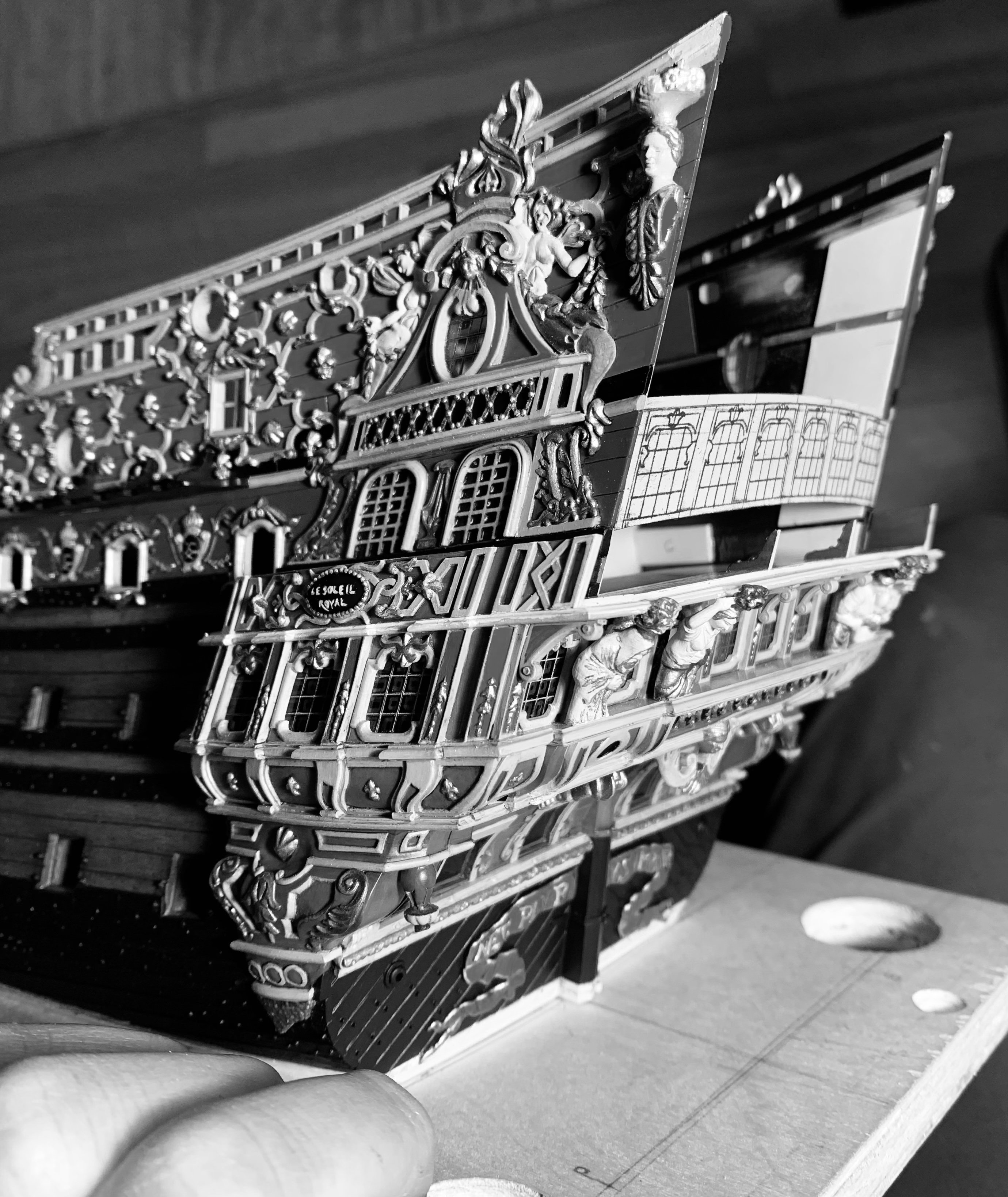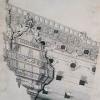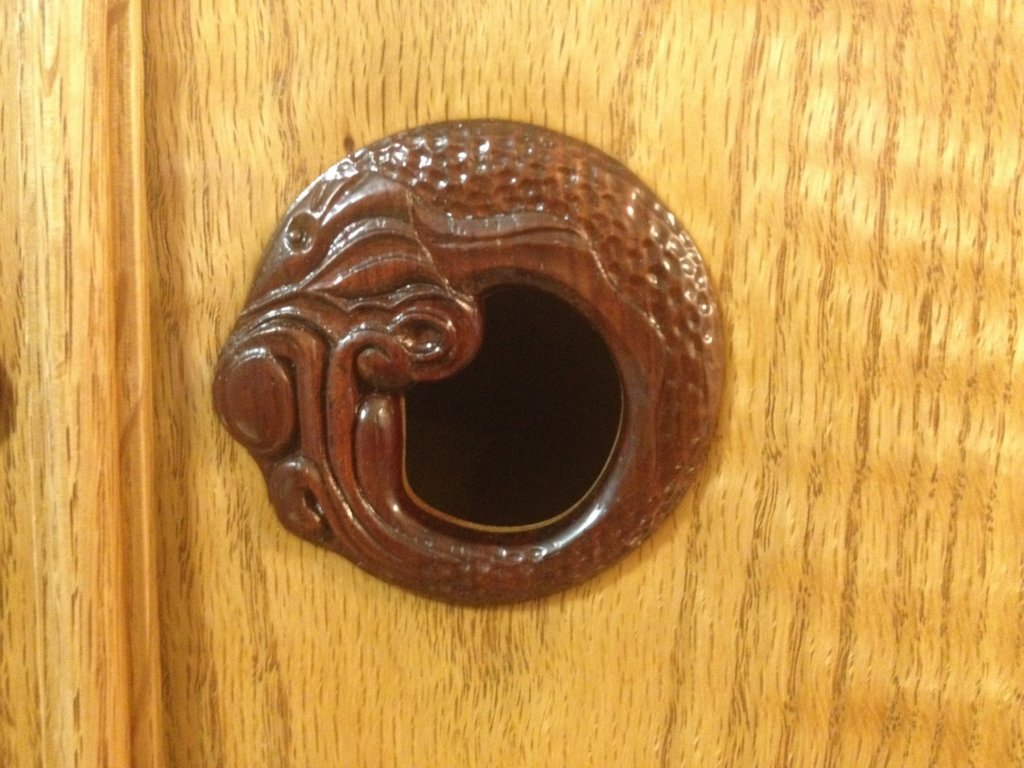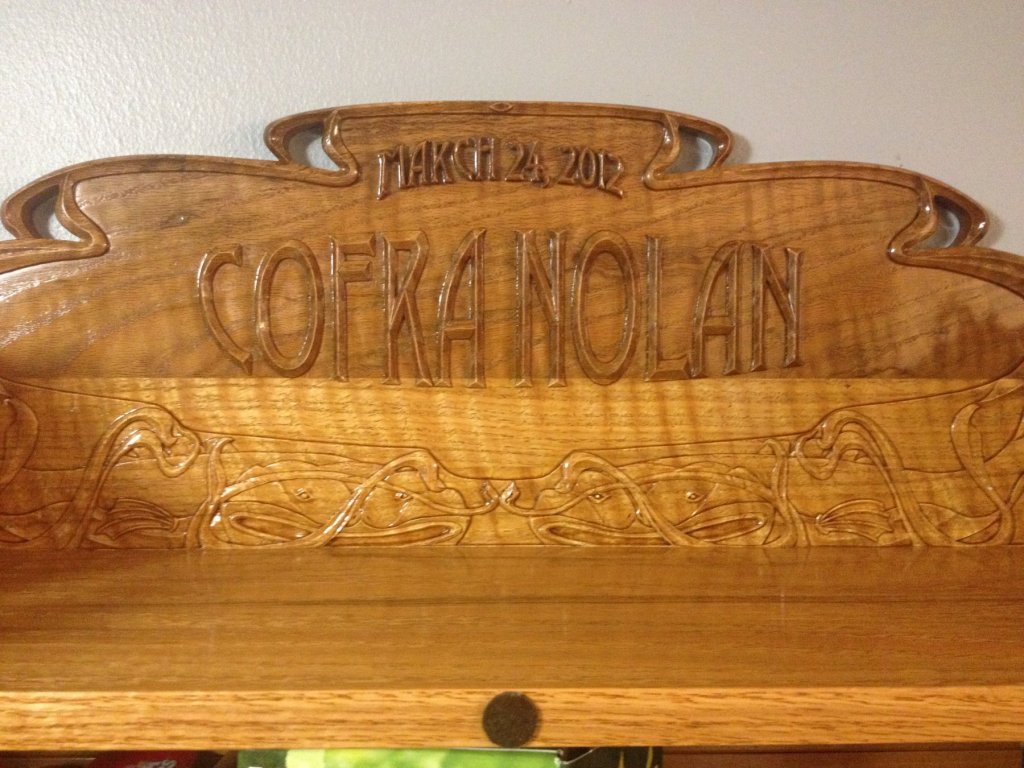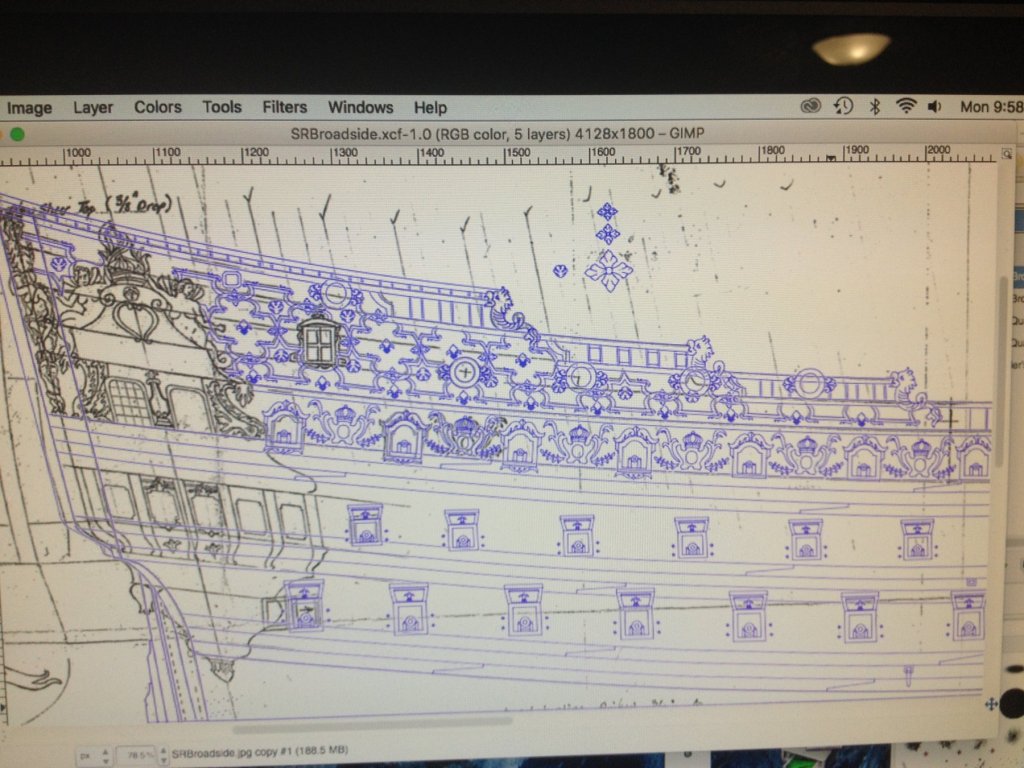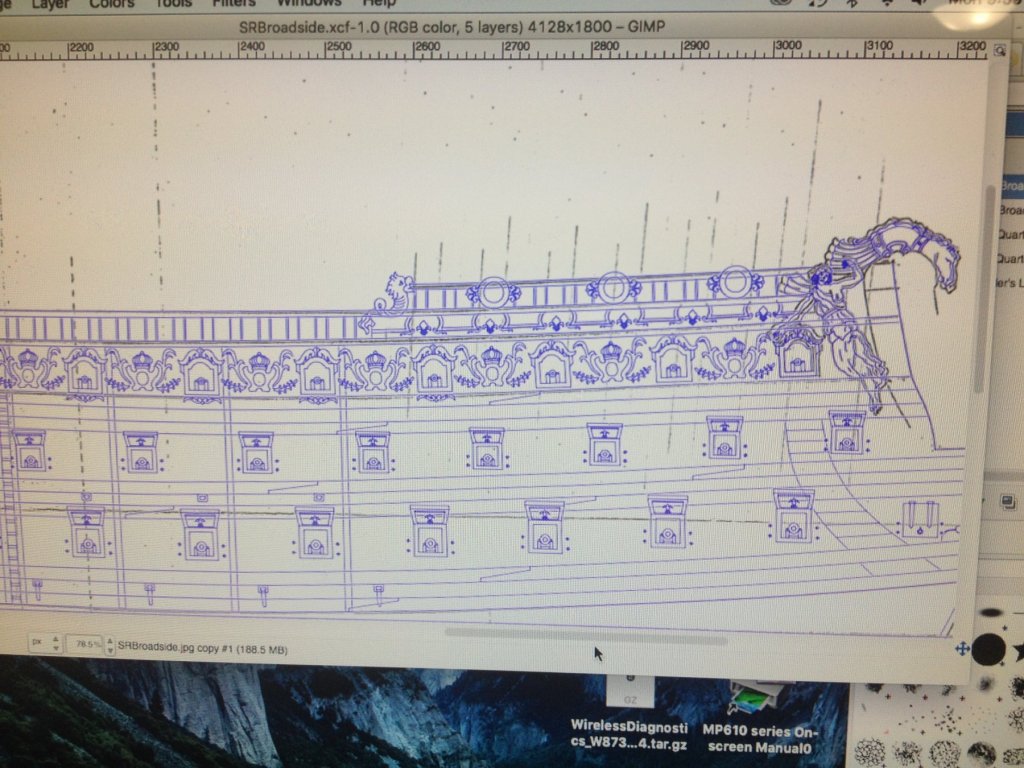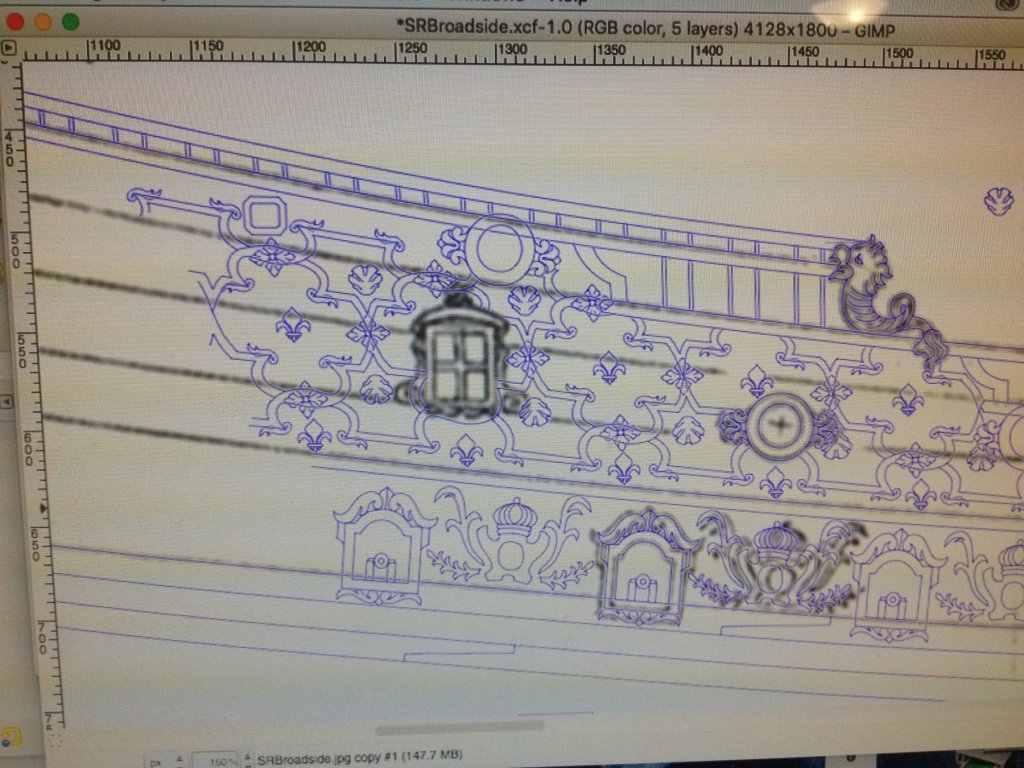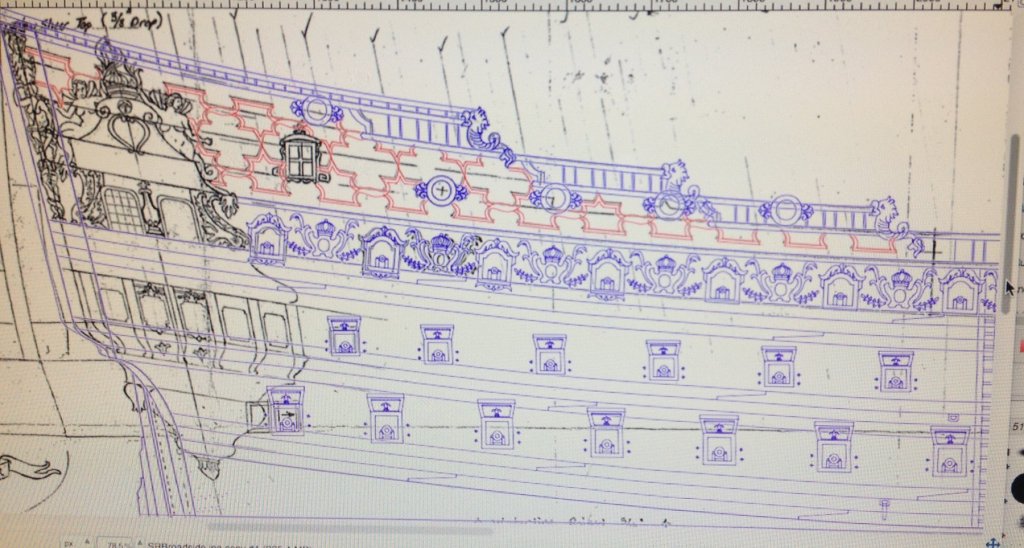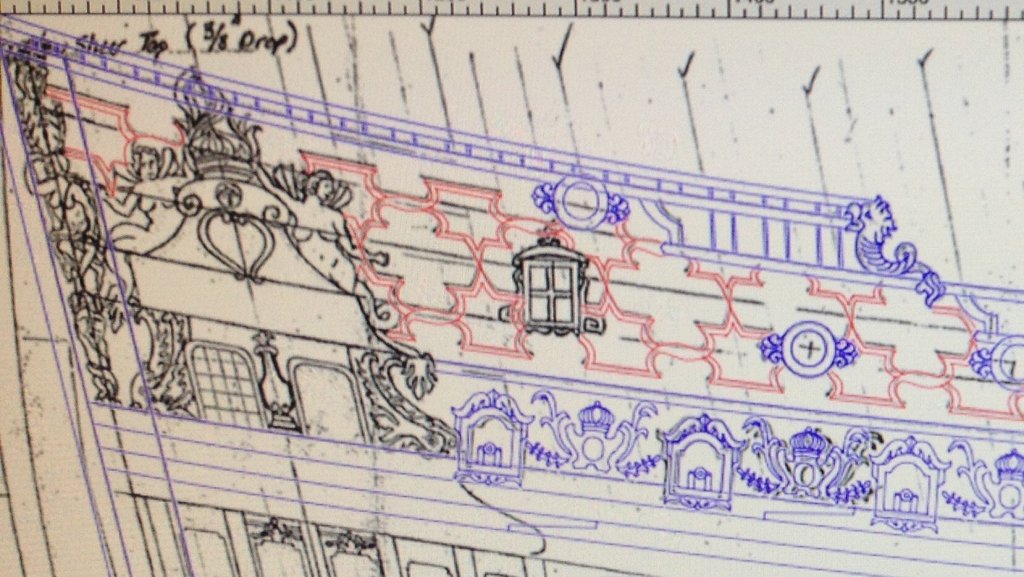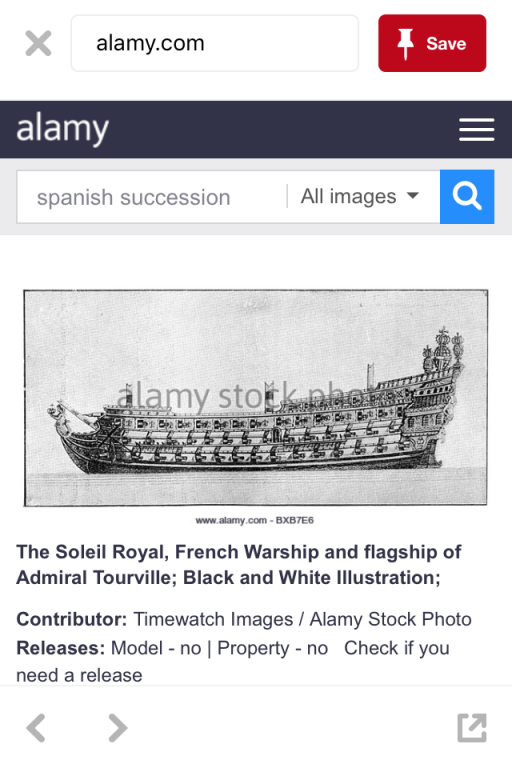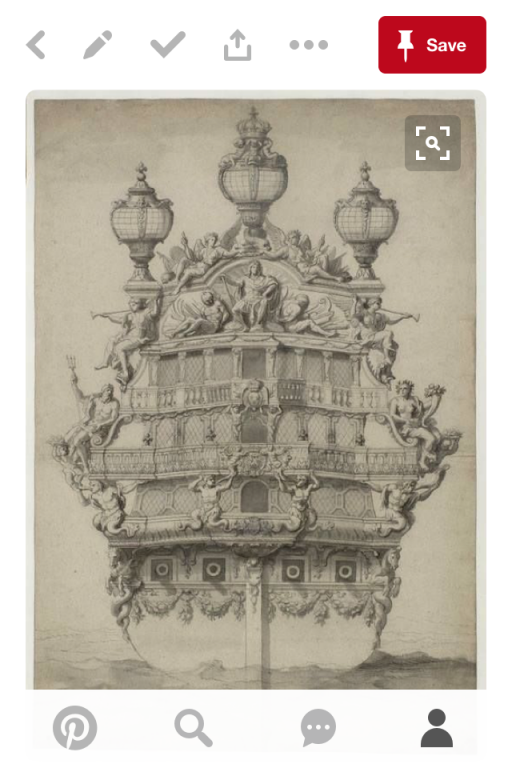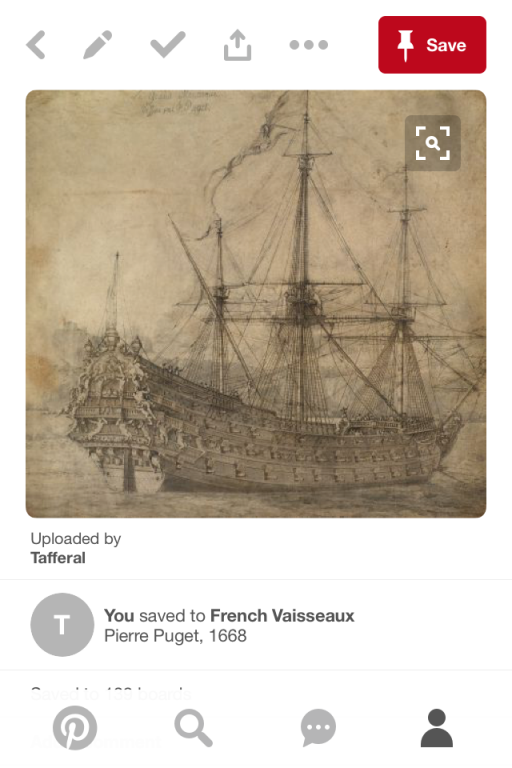-
Posts
3,292 -
Joined
-
Last visited
Content Type
Profiles
Forums
Gallery
Events
Everything posted by Hubac's Historian
-
And, yes, I think we're all a little nuts. But I'd check myself into this asylum any day!
- 2,696 replies
-
- heller
- soleil royal
-
(and 9 more)
Tagged with:
-
To answer the question, though, I stop at the point where I am required to scrap the lower hull or the upper bulwarks. I'm just not set up, at home to create a hull form, and not having to do so is still an enormous time saver for me. most of the other structural elements will he made from scratch, but I will always look to recycle what I can. I have been playing with ideas to re-use the kit stern windows and add the missing sixth window I need, for example, by simply resin-casting an extra stern plate - once I've figured out this whole casting process. I suspect that the existing camber of the five windows can simply be supplemented by an extra casting of the middle (5th window) on the stock plate. A simple test with a photocopier will tell me whether or not this is feasible. It would be a shame not to use these beautifully cast windows that Heller did such a nice job of detailing. I would have to heat-bend my window banks to accomodate the new round-up of the stern, but I think it is doable. What will be fun, for me, is watching the evolution of Cedric's build for La Reyne because he is proposing to take his project to places where I fear to tread. I think his will be the ultimate SR kit-bash of all-time, and having him here, simultaneously, is an enormous motivator for me.
- 2,696 replies
-
- heller
- soleil royal
-
(and 9 more)
Tagged with:
-
Thank you, EJ, Dan and Cedric for your thoughtful and well-reasoned responses to the problem at hand. I have to say that I am leaning toward correcting that particular flaw because I think it will bother me, down the road, especially since I will have made a mold to cast the port enhancements. Two molds, actually, because the lower enhancement is mounted separately to the wales. If I'm going to go to that degree of trouble, I might as well make these ports all they can be. Speaking to your last post, EJ, I do have a pretty good idea about where I will draw the line, but it is a slippery slope, man! The thing about this build is that 98% of what I'm proposing, I've never actually attempted before. Prior to this, all of my model making has been strictly by the numbers, as seen on the box. With this build, though, I'll be learning to make moulds for resin castings, how to do a realistic, weathered paint job, how to do a realistic waterline model in a gel sea, how to build up ornament with a variety of media, including styrene sheet and extrusions, wire, polymer clay and anything else I dig up that I think will produce a good scale effect. The whole thing about making bow and stern extension castings of the existing hull parts so that I can make the ship wider and longer may all just add up to a spectacular fail. I think it will work though. I expect to make a few castings that I have to throw away. But, ultimately, I think I will find a way to make it work and produce a good result. It is my experience with designing and making Art Nouveau furniture that has given me confidence and emboldened me to play with ideas, even when the techniques involved are, initially, beyond my skill set. Following are a pair of door pulls I made for a small wall cupboard, a few years ago. They are direct copies of a well-known pattern by the Danish silversmith Georg Jensen. My father owns a pair of cuff links in this pattern, and I realized one day, when I couldn't find pull hardware that fit the style and ornamental theme of the cabinet, that this Jensen pattern was perfect for adapting to a recessed pull: This was the first of two pulls. It measures about 2 1/2" in diameter, and is carved from bubinga. When I carved this first one, I was stationed for two weeks on our "emergency truck". Driving between jobs, through the somewhat paved streets of our outer boroughs, and sitting in the passenger seat of a bouncy old cargo van - I carved this first pull using a small assortment of knives and a few gouges, with the work double-stuck to a square of masonite. That was nothing more than white-knuckle determination and patience. Afterwards, I felt that if I could do that, I could probably do anything I set my mind to. the following cornice frieze, for the same cabinet, was carved on a table in my home and it seemed to take FOREVER. But I was committed to the process, and managed a layered relief in what is only a shy 3/33": This project with SR is right in line wih the cabinet or any of the other ornamental things I've made. Once I have a clear enough idea that I can draw something, I have confidence that I can make it happen. Eventually, and through trial and error. For me, the process of making something has become almost as exciting as the result. Almost every night I try to do something. Last night, I watched a video of Doris applying medium density cyano to a small sheet of acetate for her Royal Caroline lanterns. She had such an ingenious method and technique for applying the glue exactly where needed, without making any mess at all. The night before, I was drawing in these small mouldings for the cap rail stiles, which I sometimes see on the Arsenal models; the effect is of a framed, recessed panel of ebony, on each protruding rail frame, just beneath the rail itself. It's a dynomite looking detail, but for me it also serves the purpose of visually shortening these rail timbers, which I think the Heller kit has moulded out of scale. They are too tall. Small steps. Incremental progress, eventually adding up to a thing. I spent almost 2 years on that cabinet. I expect to spend anywhere from 3-5, actually building this SR. It's all process, for me, baby!
- 2,696 replies
-
- heller
- soleil royal
-
(and 9 more)
Tagged with:
-
Cedric, I remember well all of the filing and filling of injection mould cavities and sprues on my first SR. I am also mindfull of the fact that these kit bullwarks are too thin. Just as I created the impression of depth on the lower port opennings, I may "plank" the interior surfaces of these bulwarks to improve their detail and sense of heft.
- 2,696 replies
-
- heller
- soleil royal
-
(and 9 more)
Tagged with:
-
The issue I can see with plumbing the legs only (assuming, also, that you are going to try and preserve the sill) is that you will have to do a fair amount of finessing to join your new moulding stiles to the remaining arched header, and you will have quite a bit of tricky work in the corners, where the stiles meet the sill. If the molding around the port were a simple, flat raised molding - that would be relatively easy to add to and subtract from. Unfortunately, it is not: in cross-section, it is an astragal with thin flat edges and a half-round center. Even if you go that route of plumbing the sides and rejoining with the sill and header - at best you are left with a parallellogram shaped port. If it's to be done at all, I think it is better to recreate the raised port frame altogether with the upper port enhancement attached. Another incentive for doing this is the fact that the aft-most port on the main deck battery is overlayed by the kit quarter gallery, such that the port moulding is cast into the quarter gallery plate and not the upper bulwark, itself. because the new quarter galleries I am making land just aft of this port openning, I would have had to construct a framework anyway. The existing frames can't simply be excised from the QG plate because the carry the same coved profile as the QG plate, as it fares inboard back to the hull. The idea of 3-D printing has some appeal. Thanks to Vossiewulf, I now have some idea what the 3-D modeling component that something like that entails. But I'm not sure about taking that on. That seems like steep learning curve stuff. In any case, there is time yet to think on this.
- 2,696 replies
-
- heller
- soleil royal
-
(and 9 more)
Tagged with:
-
I have to make the port enhancment mould, anyway, so maybe...
- 2,696 replies
-
- heller
- soleil royal
-
(and 9 more)
Tagged with:
-
Hi Dan, In turning it over, in my mind, I suppose the easiest way to correct this error and produce a seamless result would be to scrape away the raised port framework around each port. Then, make a mold for new resin castings that match the profile of what you just scraped away, but with the upper port enhancement moulded in (instead of it being a separate, more fragile casting). Then you could re-position the new frames so that they are vertical over the old skewed opennings, and glue them in place. It seems likely that the necessary adjustment is so small that one could simply backfill any resulting voids with Squadron putty, and then file flush with the port openning. I'm not sure it bothers me enough to go to the effort (which is considerable), but then Dan - you have planted a seed, and you know how that goes!
- 2,696 replies
-
- heller
- soleil royal
-
(and 9 more)
Tagged with:
-
And to answer your question: Between the lower wales, these are scupper ports. You can sometimes see, in VDV portraits, these sleave or sock-like attachments on the lowest scupper ports. I'm pretty sure that the Batavia replica, in Lelystad, carries them. My presumption is that these sleaves prevent in-flow of water on the lowest battery, in rough and rolling seas. I have never seen them above the lowest deck. It seems to me that Fimo is an ideal medium for creating these.
- 2,696 replies
-
- heller
- soleil royal
-
(and 9 more)
Tagged with:
-
Thank you, Cedric! The frieze will be built up. First, I will tack-glue this layout to a sheet of .020 styrene, so that I can cut out the lattice-grid. That grid will then be cut down into manageable segments - perhaps on mitered corners, where one would expect to see joints - and then glued to the upper bulwark pieces that have been scraped free of the stock ribbon strakes and ornaments that would interfere with the new layout. I'm thinking about bending annealed wire to the shapes of the frieze layout, and then glueing a shaped wire segment to the centerline of all of the frieze lattice segments. This will give some shape and dimension to the lattice and crevices for the mild distress wash to collect. the fleur-de-lis, shells, folliate diamonds and lattice scrolls are just big enough that I can carve masters and make uniform resin castings of them. There are so many of each and they must be consistent for the finished effect to look as intended. Each casting will have it's back sanded flat and then glued to the frieze, just as you might decorate a Christmas tree. The lattice scrolls will probably have to be cut into the frieze lattice because they appear half-on and half-off the lattice. Color-wise, lately, I'm thinking that I might go with a lighter blue for the upper bulwark pieces - reserving the deep ultra-marine blue for select sections of the stern and tafferal. Also, I am leaning towards painting the frieze lattice and sheer railings in yellow ochre, and using gold only for the frieze ornaments and figurative reliefs and carvings of the stern and quarters. My thought, there, is that the gold would pop more and be more visually impactfull.
- 2,696 replies
-
- heller
- soleil royal
-
(and 9 more)
Tagged with:
-
This has been quite a busy and productive holiday weekend. I have completed the ornamental frieze layout. While there are still issues with overlapping elements, generally, I am very happy with the spacing and size of the individual elements. She is starting to look like what I intend for this project. Here are a few pictures: A detail closeup that shows the added octagonal port:
- 2,696 replies
-
- heller
- soleil royal
-
(and 9 more)
Tagged with:
-
Well, when you consider that my plans are merely a scale layout for the ornamentation - I'm really not that far ahead of you. Someday, I will create a propper lines plan from the main frame, fore and aft. However, because I have no intention of re-molding the plastic hull, frame shapes are not necessary right now. I will say that I am eagerly awaiting the release of the Lemineur/Tusset monographie on Le St. Phillipe. Although this was one of the early ships of the Second Marine, I suspect that the shape of the main frame would not have differed dramatically from that of SR. I believe the main difference would be the development of the hull, aft of the mainframe, as it resolves into the stern framework. An accurate model of SR1, must incorporate the pre-1673 stern framework, just as Michel and Niko have done with their models. Bon Appetite!
- 2,696 replies
-
- heller
- soleil royal
-
(and 9 more)
Tagged with:
-
I also remember reading, somewhere, that SR was rushed into service before the re-build was complete. Not sure where I saw that either, but may have been Andrew Peters's book Ship Decoration. Cedric, how complete are you going to make your plans? I will certainly draw up to the main tops, with the shrouds in place, because I have to figure out their new positioning. I think I will also draw in the topmasts and spars because, that too will he made from scratch and I want to be sure that I get the scale of it right. Although I will also be building new decks, I don't think I will draw them - the exception will be the new deck railings, which will have some ornamental motif that needs to be worked out to scale. Please let me know if you find that passage about SR's re-fit. I'd like to see it, if possible. Despite the spotty forecast, we also had a nice day, here, in New York. I went to my daughter's school "field day" and we had a great time!
- 2,696 replies
-
- heller
- soleil royal
-
(and 9 more)
Tagged with:
-
One question I have about the amortissement: your drawing shows the detail starting at the level of those middle deck windows, in line with the open gallery rail and rising up to the sheer line. This is often how I have seen it modeled (Royal Louis 1692, the Tanneron models of L'Agreable and Le Brilliant). However, would it not make design sense - for the sake of continuity - for the amortissement to continue down to the open gallery decking? Even if only as a framework of ornamental rails and stiles?
- 2,696 replies
-
- heller
- soleil royal
-
(and 9 more)
Tagged with:
-
Oh, and concerning the main deck ports and their lack of verticality. I agree with both you and Michel about this. Dan noticed the error as well. This is one of those things that I'm not willing to correct on this plastic model because it would necessitate re-cutting and re-framing the ports, and completely re-creating the acanthus escutcheon carvings between ports. When I eventually do a full scratch-build, I will address that issue then.
- 2,696 replies
-
- heller
- soleil royal
-
(and 9 more)
Tagged with:
-
Hi Cedric, Thank you for the excellent advice. Co-incidentally, I had been thinking about adding that second port on the poop. The issue will be shortening the secondary poop deck (poop royal deck?), but this was a necessary accomodation, anyway, as a result of lowering the sheer line. So, last night I drew in the port. Rather than a circular port to match, though, I chose the octagonal profile, seen in the Berain/Compardel portraits. Perhaps they should match, but for now, I think it still looks good. I will post a picture update after I place all of the ornaments on the frieze. Your plan for the quarter gallery looks right on-point to me. A four foot projection from the hull scales out to just a hare less than 1/2", which matches the width of the stern windows. I think you are right about the degree of bulwark ornamentation in 1669. In addition to the examples you cited, there are several others that show only a simple field of fleur-de-lis. However, what I think I am trying to re-create is the re-fit ornament of 1689, which would represent the full development and expression of the French baroque style. Afterwards, the crown would become increasingly interested in paring down these excesses. Cedric, are you using GIMP for your drafting, or some other program?
- 2,696 replies
-
- heller
- soleil royal
-
(and 9 more)
Tagged with:
-
Drawing continues. The frieze lattice is now in place, and I can now draft and scale the shells, fleur-de-lis and folliate diamonds that will ornament the frieze. This was remarkably tedious to draw. I designed the frieze lattice to be a repeating pattern, every 3/4", like wallpaper. I had thought I could simply draft one vertical section from main gun-deck to sheer strake, then copy, paste and position it every 3/4". Then, I figured I'd just erase whatever sections were not necessary. Well, that wasn't going to work. As the sheer of the bulwarks rises, towards the stern, the height between ribbon strakes tapers wider; so it could not simply be a matter of re-scaling. Everything had to be drawn to fit. There is yet to be done some clean-up and tying off of loose ends, but I think this gives me a good, open framework for the rest of the ornament.
- 2,696 replies
-
- heller
- soleil royal
-
(and 9 more)
Tagged with:
-
What a shame that these remarkable vessels lived such a sheltered life - away from the eyes of those who could accurately record their magnificence! And so, we are left to scratch our heads and wonder at it all. That is why SR is so captivating for me. She's like a puzzle that is missing so many pieces; and yet, we can see a shadow of truth, a glimmer of what she once was. You make a great point, Cedric, about the state of diplomatic relations between France and the Netherlands. I will definitely be PM'ing you when I get stumped - which is to say, often.
- 2,696 replies
-
- heller
- soleil royal
-
(and 9 more)
Tagged with:
-
The rig is really shaping up beautifully, EJ - all obsessive hours well spent!
- 608 replies
-
- la couronne
- corel
-
(and 1 more)
Tagged with:
-
Hey Dan - that is certainly an intriguing thought. Much as fhe superficial interior bulkheads would be struck as the crew beat to quarters, it would make sense to have removable quarter panels to both preserve these expensive decorative works and reduce the carnage causing splinter potential of wood flying through the air, during battle. But, I don't know whether that was a thing or not. All the best source material is written in French, and I could very likely have skimmed past that detail in deciding what passages to translate more thoroughly.
- 2,696 replies
-
- heller
- soleil royal
-
(and 9 more)
Tagged with:
-
Why couldn't the marine "photographers" of that time, the Van de Veldes, have drawn more of the important French ships? When it comes to stern architecture, little is more confusing than French practice. Ships of a similar size to SR, but still slightly smaller across the main beam, nevertheless, often had more than SR's six stern windows; as shown, the Monarch had seven and I believe La Reyne carried eight (not including the quarter galleries). This seems to have been a matter of scale and builder's preference, although certainly in many cases, the number of stern windows would be inextricably tied to the layout of the proposed decoration. When it comes to the question of open or closed, or partially open quarter galleries - generally speaking, the quarters before the Reglement of 1671 (or is it 1673?) are largely open. Thereafter, increasingly, there is a shift toward closing the quarter galleries, as the English had long been doing, by this point. Yet, there was little enforcement of any of these early regulations, which were early attempts to standardize construction practices, so there remained a great deal of variation on the subject right up to and into the construction of the Second Marine, following the La Hogue disaster in 1692. That is why, in the absence of credible drawings from the period, it really is anyone's educated guess as to the actual or intended arrangement of the stern for any of these great ships. In the case of La Reyne, though, the arrangement is really pretty clear. All of the important information is laid out in those two VDV drawings.
- 2,696 replies
-
- heller
- soleil royal
-
(and 9 more)
Tagged with:
-
Hi Cedric, Yes, at best, I think these images are vaguely impressionistic; somewhere, in there, is some truth about SR's appearance. If anyone does know, it is likely to be Michel. As always, I welcome anyone to come forward with their insight and opinions. I believe Michel had mentioned, once, that the Puget drawings for SR's ornamentation exist somewhere in the Louvre. My understanding is that Berain re-interpreted these drawings (and presumably, elements of the ships first ornamentation) to create a new decor, at the time of her refit. Has anyone out there ever seen these first Puget drawings?
- 2,696 replies
-
- heller
- soleil royal
-
(and 9 more)
Tagged with:
-
Not because it particularly informs this build, but simply because I happened upon these images in my recent internet searches - I would like to point out a few things regarding the early appearance of SR. It would be difficult to argue that the following two images are of any significant value as historical references, other than as folk-art, but nevertheless they seem to be the only two images that represent the very first incarnation of Soleil Royal, before her re-fit: While these two images seem to differ more than they agree (the presence of a middle-deck entry port on one, the relative profussion of upper bulwark ornamentation on the first image, the location of the main and fore channels), it is interesting to note where there is agreement. In particular, the arrangement of the headrails and the figurehead are very similar. And while the depiction of these details is crude, I will say that they seem to mimic what we can see of La Reyne's headrail arrangement. This is the main reason why I believe these images to be representative of SR, after her launching. What's really interesting to me is what little we can see of the stern ornamentation. It is known that Peter Puget designed the original ornamentation and he is well known, and often maligned, for his large figurative works. What I find interesting about the first drawing is the large nereid figure between the middle and quarter deck levels of the stern. A similar figure appears in the more realistic second drawing. Likewise, at the lower deck level, where the stern evolves into the counter timber, the first drawing shows a horse figure, which may also exist in the second drawing. It seems to me that, in actuality, these figures probably looked very much like the proposed and actual ornament for The Monarch of 1668 - another of the vessels that Puget designed ornamentation for. I don't think it is too far a leap of faith to say that, in her original appearance, Soleil Royal was probably architecturally and ornamentally a very similar ship to the Monarch. The particular motifs would have been different, but the probable arrangement of her quarter galleries - all open walks - would probably have been very similar. Also, the Monarch being a heavily decorated ship, was probably almost on a par with SR's level of ornamentation. I don't think there are any hard conclusions to be drawn here; just interesting possibilities of what might have been. Interestingly, both drawings of SR only show 15 gun pory opennings on the first deck.
- 2,696 replies
-
- heller
- soleil royal
-
(and 9 more)
Tagged with:
-
Yes, Michel's ship is indeed a masterpiece - a timber for timber re-construction of the real thing. I can relate to the end-of-year shool shuffle, as we are all quite busy with the same. Progress continues, albeit at an even slower pace. I am so looking forward to your contributions, Cedric, as I continue to watch Michel's ship rise from the stocks.
About us
Modelshipworld - Advancing Ship Modeling through Research
SSL Secured
Your security is important for us so this Website is SSL-Secured
NRG Mailing Address
Nautical Research Guild
237 South Lincoln Street
Westmont IL, 60559-1917
Model Ship World ® and the MSW logo are Registered Trademarks, and belong to the Nautical Research Guild (United States Patent and Trademark Office: No. 6,929,264 & No. 6,929,274, registered Dec. 20, 2022)
Helpful Links
About the NRG
If you enjoy building ship models that are historically accurate as well as beautiful, then The Nautical Research Guild (NRG) is just right for you.
The Guild is a non-profit educational organization whose mission is to “Advance Ship Modeling Through Research”. We provide support to our members in their efforts to raise the quality of their model ships.
The Nautical Research Guild has published our world-renowned quarterly magazine, The Nautical Research Journal, since 1955. The pages of the Journal are full of articles by accomplished ship modelers who show you how they create those exquisite details on their models, and by maritime historians who show you the correct details to build. The Journal is available in both print and digital editions. Go to the NRG web site (www.thenrg.org) to download a complimentary digital copy of the Journal. The NRG also publishes plan sets, books and compilations of back issues of the Journal and the former Ships in Scale and Model Ship Builder magazines.

